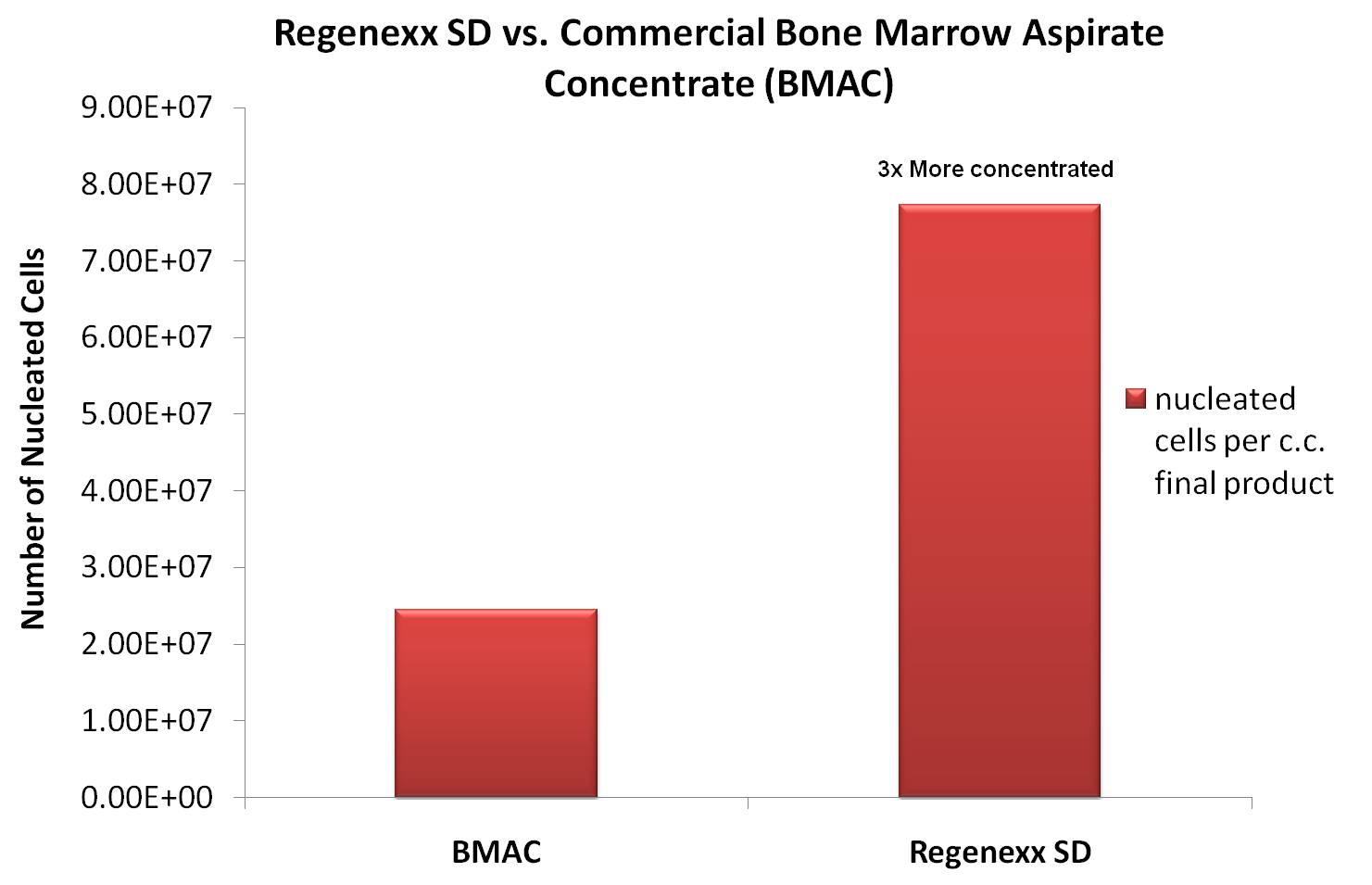Regenexx-SD Lab Processing Produces Dramatically More Nucleated Cells when Compared to a Bedside Centrifuge
A lab is expensive while a bedside centrifuge is a much cheaper solution. One of the reasons we’ve always used our cell biology lab versus a bedside machine is that it allows us to produce better results for our cell therapy patients. This is a good example. We took bone marrow aspirate from several patients and used a commercially available bedside centrifuge machine versus our lab based Regenexx-SD process to isolate stem cells. We then counted the nucleated cells produced (the fraction of the bone marrow where the stem cells live) The greater the number of nucleated cells the better. Average yield after processing of the bone marrow is shown above. Note that the number of MSC’s obtained via the Regnexx-SD lab based method is about 3 times (2.45 x 10 exp 7 for the bedside machine and 7.74 X 10 exp 7 for the Regenexx-SD lab) the number obtained by a bedside centrifuge. Why? A machine is a one size fits all solution. These machines don’t change the processing parameters to customize the processing to the sample. In this case, the Regenexx-SD process can concentrate the cells to the highest concentration per volume injected. Is this important? Many studies have shown that placement of stem cells in a joint is very important (or for other areas like a heart), so having more cells in a specific spot we believe will make a difference for patients. (Details: Because the company would only allow us to sample two of the very expensive, bedside centrifuge kits, this is an n=2 result.)

If you have questions or comments about this blog post, please email us at [email protected]
NOTE: This blog post provides general information to help the reader better understand regenerative medicine, musculoskeletal health, and related subjects. All content provided in this blog, website, or any linked materials, including text, graphics, images, patient profiles, outcomes, and information, are not intended and should not be considered or used as a substitute for medical advice, diagnosis, or treatment. Please always consult with a professional and certified healthcare provider to discuss if a treatment is right for you.

